Development of new grape species, ecotourism, registered Geographic Indications (GIs), and many awards around the world. Wine lovers looking for novelties in the wine world are lucky to count on Brazilian producers, who each year present a diverse identity, a remarkable aspect of the country’s agriculture.
The Brazilian wine market has been undergoing significant growth in recent years due to investment in research and product quality improvement from both the public and private sectors. In the past five years, national wine production has grown by 1.3%, and exports have increased by 173.1%.
Although the total revenue is still low when compared to established wine-exporting countries like Argentina, Brazil is the only country in the world with three different types of winegrowing: the traditional one in the South and Southeast regions; the tropical one, in the São Francisco Valley; and winter winegrowing.

According to the International Organization of Vine and Wine (OIV), three countries (Italy, France, and Spain) account for nearly half of the world’s wine production. In 2021, Brazil ranked 14th on the OIV’s largest producers list and showed the highest production growth rate of 60% among the top 15 countries. The wine and grape juice production chains in Brazil trade approximately R$ 11 billion, including links in the supply chain, distribution channels, and tourism. Before the pandemic, the number of “wine tourists” in Brazil was growing at an average rate of 10% to 15% per year.
“Brazil is still a young country when it comes to wine. With very recent winemaking, the evolution in the last ten years is huge. This is due to significant investments, modernization of the cultivation and production systems, and the development of new varieties, better adapted to our terroir,” says Ricardo Morari, president of the Brazilian Enology Association (ABE). All this has placed us as a very promising country in the production of wines and sparkling wines, as well as with plenty of room for experimenting, he explains.
Organic and biodynamic viticulture
Among the emerging wines in Brazil, organic and biodynamic viticulture is a challenge that requires a lot of knowledge of the environment, climate, and grape variety to fully adapt. “I see it optimistically because whenever one introduces forms of management with less intervention, one puts into practice a philosophy of greater care that reaches even traditional cultivation,” says Morari.
A young company that invests in this market trend is Valparaiso. Sustainability and the artisanal way of producing wines is the strength of this family company, located in Serra Gaúcha, southern Brazil, the most traditional wine-producing region in the country. In this vineyard located in the city of Barão, all the production is taken care of in the most specific details so that there is no use of chemical products.
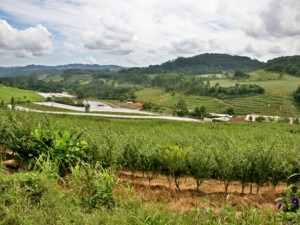
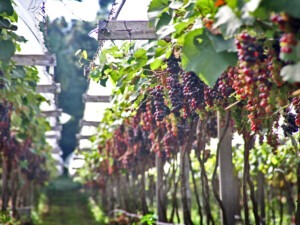
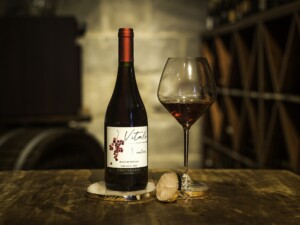
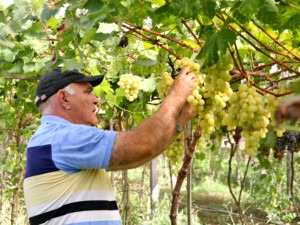
Valparaiso Winery, Arnaldo Argenta. Photo: Daniel Schuur
The production of organic grapes is based on the use of a pioneering technique (of covering the grapes and avoiding humidity), associated with a precise irrigation system. “The covering helps for the full ripening of the grapes, which enables the production of high-quality natural wine,” explains Naiana, the company’s co-owner. The wine production is restricted to 30 thousand bottles per year, but the content of each one of those shows care and quality control. The winery also values polyculture, with several types of berries for its own consumption.
It all started with the dream of Naiana’s father, the agronomist Arnaldo Agenta. The fourth generation of winemakers in the family, Agenta produced wines for the family’s consumption, and after 30 years of consulting other producers, he decided to invest in selling his organic production.
Together with his daughter, who left her job in an international company to invest in the wine world, Arnaldo recovered an old wine-producing farm, dating back to the 1930s. When he acquired the “estancia” in 2006, he began to work for resuming winemaking activities and the development of grape varieties for organic and artisanal production. In 2018 they produced their first vintage, and the market entry happened two years later, in 2020.
Today, having conquered the domestic market and working with 45 grape varieties and nine wine varieties, one of the company’s focuses is exports. Participant of CNA’s Agro.BR project, which aims to facilitate and increase the number of Brazilian rural entrepreneurs in foreign trade, Naiana says she has been taking part in fairs, meetings, and business rounds.
Serra Gaucha Tradition
Also in Serra Gaúcha, one of the largest wine producers in Brazil, the Garibaldi winery has been investing in exports for six years. However, the company’s history goes back to the 1930s, when a cooperative of 73 grape producers sought to add value to the fruit by producing wines. Today, 450 associated families work together in the growing of grapes for the production of 11 million liters of whole natural grape juice, 4 million bottles of fine and table wines, and another 7 million bottles of sparkling wine.
The company invests regularly to keep up with market trends. The last great turnaround was in 2004 when the bet was on the quality of sparkling wines. Today, the region is known for the high quality of this type of wine. “In the last few years, Brazil has gained some visibility in the international market, and today we are focused on consolidating our identity. We have the lightest and most tropical sparkling wine in the world, that’s what we work on,” says Maiquel Viganti, Garibaldi’s marketing manager.
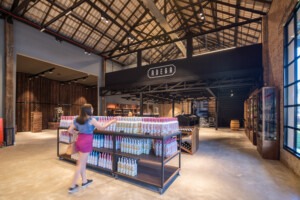

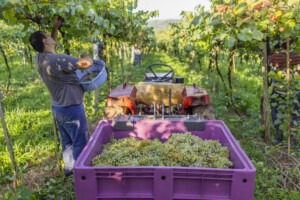
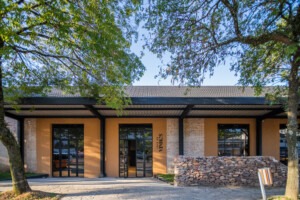
He explains that the company has invested for at least six years in conquering the international market, being the most-awarded winery in Brazil. “Today, we export up to 65 thousand bottles per year or 0.5% of our production. The potential is immense,” he explains, mentioning the United States, Colombia, Portugal, and the United Kingdom as some of the destination countries.
Another great bet Garibaldi has made is on the infrastructure to enable guided tours. He tells that R$ 6 million were invested in renovations to welcome tourists to the wineries (which already happens every year), a wine bar, and an event center that should start operating in April.
Tropical wines
It is the end of January and we are in the middle of harvest, while the wineries welcome tourists for tastings amidst the harvest of ripe grapes. In the Vale do Rio São Francisco [São Francisco River Valley region], harvests are intense, and the producers have to work on all phases of winemaking almost all year round.
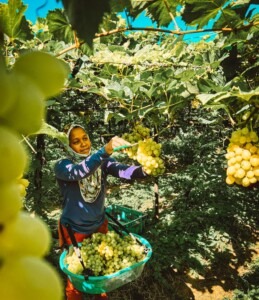
This is the case for Garziera, which produces tropical wines. “With the irrigation system developed in the region, we can have precise control of the acidity and alcohol content. One of the most remarkable aspects of our production is being able to find grapes in various stages [of ripening] on the same day in a single winery,” says winemaker Rodrigo Fabian, partner of the company.
In a little more than 100 years of Brazilian wine history, it was only in 1985 that the São Francisco Valley launched its first commercial wine. With a technical background derived from the Serra Gaúcha, Fabian has seen the evolution of tropical wines up close. “We have seen a great evolution in the last 15 years, with the emergence of fine wines for aging and young wines, sparkling and semi-sparkling wines that are gaining more and more market space today,” he says. Fabian also says that the processing of 20 thousand tonnes of grapes takes place all year round, with a vast pruning and harvesting schedule, and the growing interest of tourists eager to try new labels.
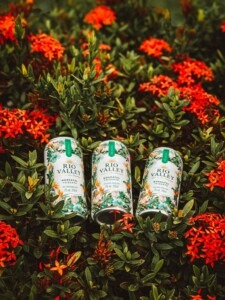

In early November 2022, the region obtained the first Geographical Indication (GI) for tropical wines. The unprecedented acknowledgment was granted to the region, which encompasses the cities in Bahia and Pernambuco states. That registration is the culmination of decades of work by producers, as well as universities and research institutions such as the Brazilian Agricultural Research Corporation (EMBRAPA), which financed the development of wine production in a region with a semi-arid tropical climate—very different from the temperate climate found in the main wine producing countries.
Fabian considers the registration as one more factor to build the reputation of that particular wine from the Northeastern region, sunny all year round. “We already have some visibility, and this is reflected on the shelves in local supermarkets, but also exports. We are shipping canned wines and sparkling wines to the United States, and we are also working with Halal-certified products,” he concludes.